The announcement about the pi-top [4] came out a short time ago, as a portable mini-pc running the Raspberry Pi 4 board, and plans of package deals for backers on Kickstarter. The campaign started on July 9 2019 and was fully funded within 4 hours. Pi-top has now set a new goal featuring several price packages, each with features, applications and components that expand on what was reported in the original article covering the pi-top [4] mini-pc.
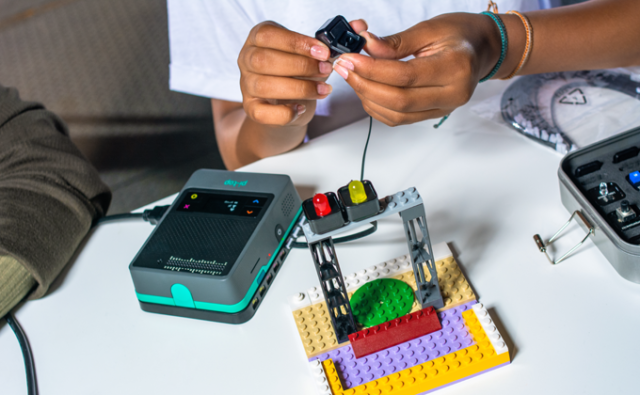 The Main Campaign and Company
The Main Campaign and Company
Pi-top is based in Austin and Brownsville Texas. They produce hardware, software and project kits based around the Raspberry Pi family of boards. The latest device is an expandable and multi-purpose platform mini-PC based on the Raspberry Pi 4, and enhanced by sensors, LED’s, components and software. The Kickstarter campaign has already been funded, and there are now a stretch goal and three packages being offered.
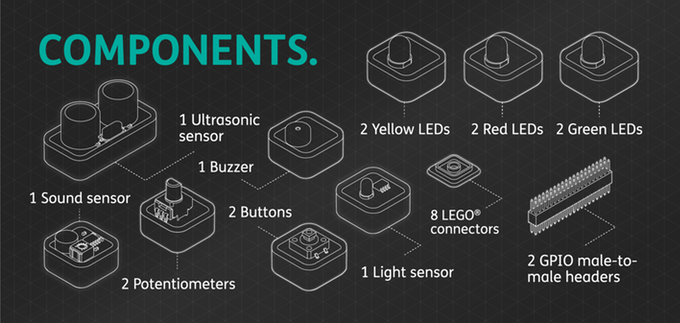 The pi-top [4] at $199.00
The pi-top [4] at $199.00
- 1x pi-top [4]
- Raspberry Pi 4 with 4GB RAM
- 16 GB SD Card
- Access to pi-top Further
- 12x pi-top component modules – w/case
- 1x Foundation Plate
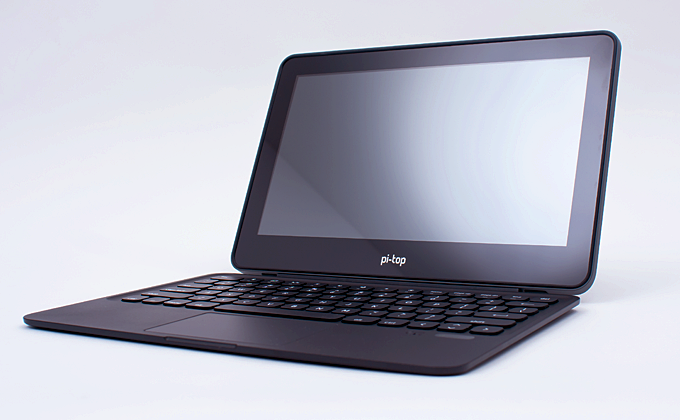 Pi-top [4] with screen and keyboard $349.00
Pi-top [4] with screen and keyboard $349.00
- 1x pi-top [4]
- Raspberry Pi 4 with 4GB RAM
- 16 GB SD Card
- Access to pi-top Further
- 12x pi-top component modules – w/case
- 1x Foundation Plate
- 1x Detachable Bluetooth keyboard
- 1x 11.6” Full HD Touchscreen
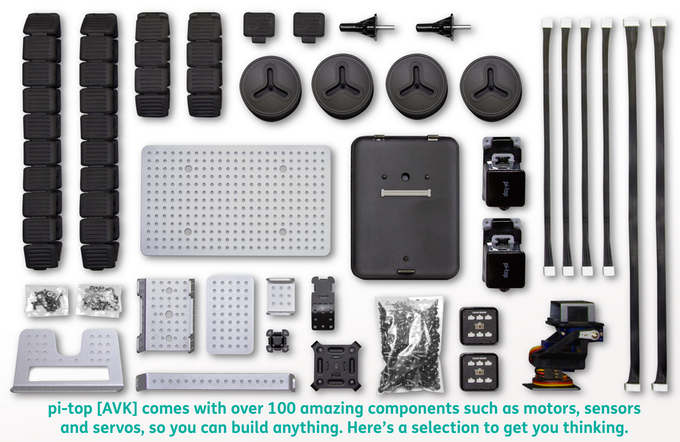 pi-top [4] with pi-top [AVK] $349.00
pi-top [4] with pi-top [AVK] $349.00
- 1x pi-top [4]
- Raspberry Pi 4 with 4 GB RAM
- 16 GB SD Card
- Access to pi-top Further
- 12x pi-top component modules – w/case
- 1x pi-top [AVK]
- 1 camera
- 1 color sensor
- 1 castor ball
- 2 DC encoder motors with gearboxes
- 2 free-wheel axe mounts
- 4 wheel rims
- 30+ tyre (tread) segments and joint bars
- 20 pieces of modular metal building structure
- 40+ reusable plastic rivets
- 1 Expansion Plate
Many Uses and Features
The pi-top [4] is a very flexible platform to begin developing new ways to interact with the world around us, some of the uses have been hydroponic gardens, temperature and climate measurements, a crane to lift cargo, a robot pet that orients to the sound of a voice. The social platform Further, which offers innovators the chance to share code, development and successes and failures with the world. There is the search feature through Search Portal, where you can search for anything and everything without having to leave pi-top [4] environment.
The Brains of the System
The pi-top [4] runs off a Raspeberry Pi 4 Model B equipped with a Broadcom BCM2711 quad core Cortex-A72 processor, with speeds up to 1.5 GHz, sporting up to 4 GB LPDDR4 RAM, 4K H.265 video decoding support.
The System of the pi-top [4]
The whole system is run off of pi-topOS SIRIUS, which offers many improvements on CPU performance and usage. There is a compatibility to run other OS systems, any OS that work with Raspberry Pi 4 is compatible with pi-top [4]. OS types such as NOOBS, Ubuntu MATE and even Windows 10 IoT Core. The pi-topOS SIRIUS is the official pi-top supported OS.
How it Connects
The sensors, LEDs and other connections are made through the Foundation plate that attaches to the bottom of the computer and comes with the mini pc. There is an Expansion Plate to power and control larger, more sophisticated devices and components.
The Kickstarter campaign lasts for another 28 days.
Via Liliputing

Stephen started writing about technology after publishing sci-fi short stories. His first White-Paper, written in 2008, was well received and inspired him to continue writing about technology. Today he writes in the technology space full time, covering a multitude of topics. During the time he wrote part-time he edited hundreds of titles for large publishers, in science and technology. He lives in Staten Island, with his wife and children.
Support CNX Software! Donate via cryptocurrencies, become a Patron on Patreon, or purchase goods on Amazon or Aliexpress


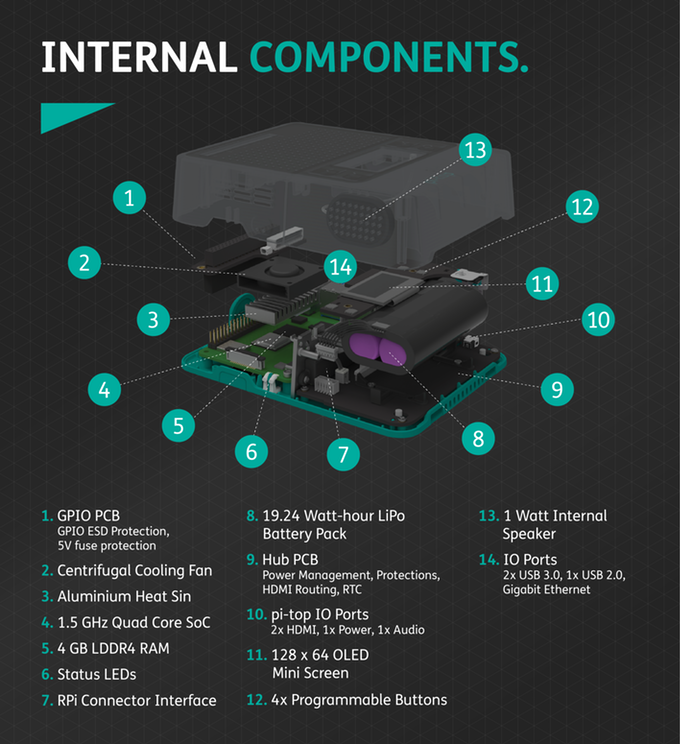



I think this product will be a big hit for them. It looks pricey, but it completely eliminates the need for dealing with the bare Pi board. It is only sold fully assembled. It comes with an internal battery, heatsink and fan, a 4GB Pi 4, and the complete inventors kit of sensors/LEDs/switches, etc–they just plug in. I sprung for the basic option and for the super early bird option with everything. I own two Pi-Top CEED desktops, and two versions of the laptop. They improved to a point where I’d say their mechanical design is very good. I sincerely hope that they will finally sell parts. To use this with a robot and the tablet/laptop, you’d want base plates in both places. This is not the budget option, certainly, but it lets people get started with little or no learning curve.
The heat sin [sic] of the Foundation.
I think PineBook makes more sense.